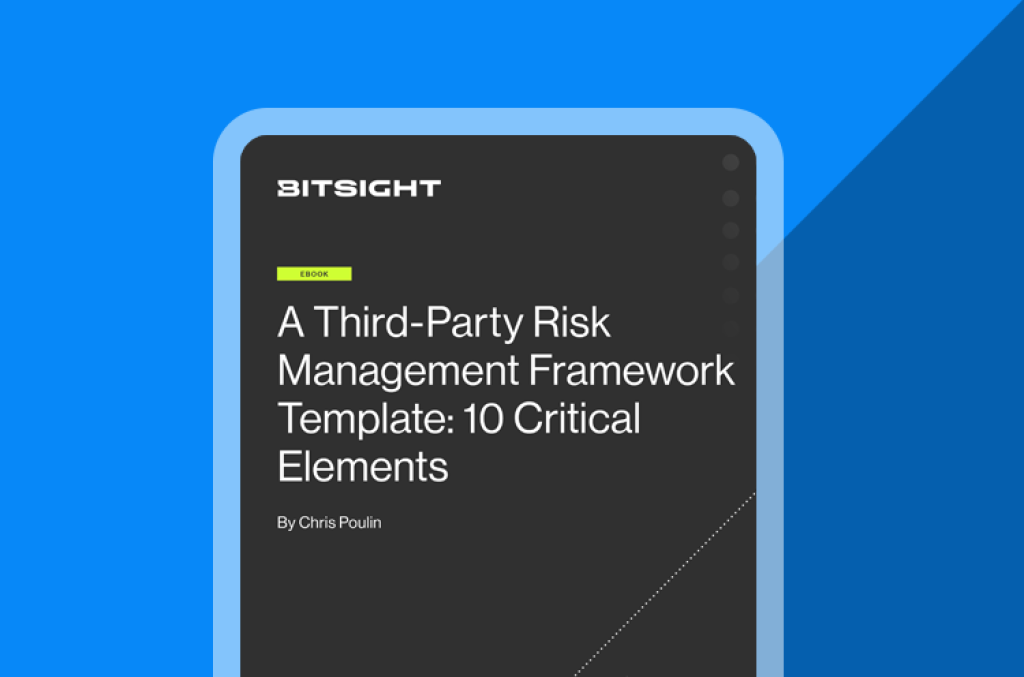Strengthen your third-party defenses—and when vulnerabilities hit, deploy AI-accelerated workflows to prioritize threats and drive rapid response.
6 Third Party Risk Management Best Practices
As digital ecosystems grow, so do the supply chain risks hidden within them. Third-party vendors, suppliers, and service providers are now deeply embedded in most organizations’ operations—and in their attack surface. But every new connection expands the potential for exposure.
That’s why third-party risk management (TPRM) has become one of the most urgent priorities for cybersecurity and governance teams. Yet, despite years of progress, many organizations still rely on slow, manual vendor assessments or static risk reports that fail to reflect today’s rapidly changing threat environment.
To effectively protect your organization, TPRM needs to evolve into a continuous, data-driven discipline—one that prioritizes efficiency, scalability, and real-time insight.
What is third-party risk management?
Third-party risk management is the process of monitoring relationships with vendors and partners in order to assess and mitigate cybersecurity risk.
TPRM programs involve a number of tools and approaches, and best practices will vary depending on the size of your business and the nature of your industry. However, there are key components of TPRM that every business should follow.
6 TPRM best practices
1. Establish a scalable third-party risk management framework
The foundation of any successful TPRM program is a well-defined framework that aligns with your organization’s risk appetite, business goals, and regulatory environment. Start by clearly defining who owns third-party risk—whether it sits within security, risk management, or GRC—and establish policies that ensure consistency across all departments.
Best practices include:
- Define vendor tiers by risk level. Not all third parties carry the same level of exposure. Segment vendors based on access, data sensitivity, and business criticality.
- Standardize assessment workflows. Use frameworks like NIST CSF, ISO 27001, or SIG Lite to maintain consistency.
- Automate onboarding and reassessments. Leverage AI-powered tools such as Bitsight Vendor Risk Management (VRM) to streamline vendor reviews and reduce time-to-assessment by up to 75%.
By building a repeatable process supported by automation, teams can scale TPRM efficiently—even as the number of vendors grows.
2. Implement continuous monitoring for real-time risk visibility
Static vendor assessments offer only a point-in-time view of cyber risk. Continuous monitoring, on the other hand, provides a living picture of your vendor ecosystem—detecting new threats as they emerge.
With Bitsight Continuous Monitoring, organizations gain evidence-based visibility into vendor security performance, updated daily across 40 million organizations worldwide.
Continuous monitoring best practices:
- Establish baseline performance metrics for each vendor’s security posture.
- Track changes in real time using objective data such as ransomware exposure, vulnerabilities, and compromised credentials.
- Integrate risk alerts into existing workflows to enable quick remediation and escalation.
Organizations with formal, business-aligned cyber risk programs are 4.5x more likely to continuously monitor all vendor relationships, reducing blind spots and accelerating response time.
3. Prepare for zero-day events with evidence-based response
When a critical vulnerability or zero-day emerges, seconds count. One of the most important best practices is having a repeatable, evidence-driven process for identifying which vendors are affected and coordinating remediation quickly.
Using Bitsight Vulnerability Detection & Response, teams can:
- Instantly surface vendors exposed to a specific vulnerability.
- Share evidence-backed outreach questionnaires at scale.
- Track remediation progress through built-in dashboards and reports.
This not only accelerates response time—it helps maintain trust and transparency with partners and regulators during high-pressure events.
4. Strengthen governance, reporting, and board communication
For many organizations, one of the biggest challenges in TPRM isn’t collecting risk data—it’s communicating it effectively.
Security leaders must translate technical risk indicators into business language that resonates with executives and boards. That means connecting third-party exposure to potential operational and financial impact.
To achieve this:
- Use quantitative metrics (such as likelihood of breach or ransomware correlation) to measure program success.
- Leverage tools like Bitsight Security Performance Management (SPM) to report risk trends over time and benchmark performance against industry peers.
- Create dashboards and summary reports that provide context, not just data—showing how improvements in third-party security translate into reduced business risk.
Effective communication not only improves accountability but also strengthens relationships with stakeholders, regulators, and insurers.
5. Use AI to scale compliance and efficiency
As regulatory pressure increases under mandates like DORA, NIS2, and SEC cybersecurity disclosure rules, compliance has become a key driver of TPRM programs.
Modern best practices emphasize automation and intelligence. Bitsight Framework Intelligence, powered by Bitsight AI, automatically parses and maps vendor documentation (like SOC 2 reports) to frameworks such as NIST and ISO 27001, identifying gaps in seconds instead of hours.
By automating control mapping and evidence analysis, teams can:
- Cut assessment time dramatically.
- Improve accuracy and consistency.
- Reuse evidence across multiple frameworks.
This reduces manual workload and ensures audit readiness—without slowing business operations.
6. Measure, mature, and continuously improve
A mature TPRM program is never static. As threat landscapes and supply chains evolve, continuous improvement is key.
Establish ongoing measurement practices:
- Benchmark your performance against industry peers using objective ratings.
- Quantify risk reduction over time through performance metrics.
- Feed lessons learned back into onboarding, monitoring, and response workflows.
Organizations that achieve alignment between their cyber risk management program and business goals are not only more resilient—they’re also more confident in their ability to defend, detect, and decide strategically.
Other tips for managing third party risk
Get more from limited resources
Utilizing vendors to effectively run a business has become a requirement instead of just a cost control tactic. In order for the growing landscape of vendor resources to be valuable to an organization's supply chain, third-party risk managers have to efficiently and effectively manage all aspects of the vendor lifecycle.
Old processes for managing third party risk across each phase of the vendor lifecycle were designed for managing a handful of vendors, but with the expanding pool of third parties organizations are relying on each year to meet the business needs of the overall organization, third-party managers are getting lost in the wave of vendor management requirements.
The pools of data are getting larger, and the time third party risk managers have to spend evaluating each vendor is diminishing. By implementing automated, reliable, continuous monitoring technology into your strategy for managing third party risk, security leaders can stop exasperating their already limited resources. Continuous monitoring technology removes the need of manually working with data, and allows risk managers to focus the attention on actually acting on the results of the data.
Assessing your vendors efficiently
By taking an automated and data-driven approach to managing third party risk, vendor managers can reclaim the time wasted on manual and inefficient processes. Efficiently managing vendors, especially when assessing inherent risk during the onboarding and reassessment periods, can mean time and money saved down the road. When threats arise, TPRM leaders that use continuous monitoring technology to manage third party risk not only can be confident in the cybersecurity program their third parties maintain, but also can quickly assess their vendors to know when and where threats occur.
With continuous monitoring technology, third party leaders no longer have to rely on the subjective responses and data reported out by their vendors, but instead can verify the cybersecurity data from their third parties with an objective and reliable rating. Bitsight’s TPRM product can monitor an organization’s portfolio with the necessary level of focus on critical vendors, as well as a cyber risk monitoring option for the entire vendor pool that sometimes gets ignored when resources are tight.
Confidently present your program
Managing third party risk also includes being able to represent your third-party risk management program confidently and accurately to your company stakeholders. Speaking the language of your board of directors, C-suite executives, and other vendors requires accurately presenting cyber risk metrics, and data compiled from continuous monitoring technology brings accuracy and visibility to the forefront of board reporting.
Instead of looking at data that’s only representative of a point in time of the vendor cybersecurity landscape, third party managers using continuous monitoring technology can present up-to-date data that can confidently represent the entirety of a company’s vendor landscape. The next time a company stakeholder requests data-based information about your third party cybersecurity program, you want to be able to give them an accurate and timely response that you can trust.
NIST TPRM best practices explained
A great place to look for third-party risk management best practices is the National Institute of Standards and Technology’s “Framework for Improving Critical Infrastructure Cybersecurity,” commonly known as the NIST framework.
The NIST framework outlines voluntary standards and best practices for managing cyber risk. This framework is the foundation for most emerging cybersecurity regulations
The NIST framework refers to third-party risk management as supply chain risk management (SCRM), and identifies five subcategories of SCRM best practices. Here are the five subcategories, and what they mean in practice:
1. “Cyber supply chain risk management processes are identified, established, assessed, managed, and agreed to by organizational stakeholders.”
This guideline concerns internal buy-in for TPRM.
In order to build a successful TPRM program, Board members and executives need to be educated on the basics of TPRM so they understand the gravity of third-party risk and can make informed decisions concerning supply chain security.
Additionally, there must be documented strategies for TPRM that apply to all relevant third parties and all departments. Cybersecurity is not solely an IT issue, and the entire organization contributes to a culture of cybersecurity.
2. “Suppliers and third party partners of information systems, components, and services are identified, prioritized, and assessed using a cyber supply chain risk assessment process.”
In order to perform accurate risk assessments and establish objectives, you need to have an in-depth understanding of the cybersecurity performance of your vendors and partners. This guideline can be broken down into three steps: identify, prioritize, and assess.
- Identify — First you have to understand who your third parties are. Don’t rely on any pre-built list; you might have had suppliers come in through “Shadow IT” or other undocumented mechanisms. Create an exhaustive list of every third-party connection to your business.
- Prioritize — Once you’ve compiled a list of your third parties, you’ll need to document what data they have access to, the sensitivity of that data, and the level of access they have. This information will help you decide how to prioritize your TPRM resources, with the riskiest vendors getting the most attention.
- Assess — Determine your third parties’ cybersecurity performance using a combination of questionnaires, penetration tests, on-site visits, and cyber risk ratings. Bitsight Security Ratings are a data-driven, dynamic measurement of an organization’s cybersecurity performance (like credit ratings for cybersecurity) that are quickly becoming part of standard TPRM procedure.
3. “Contracts with suppliers and third-party partners are used to implement appropriate measures designed to meet the objectives of an organization’s cybersecurity program.”
TPRM is not an after-the-fact exercise. Procurement should rely on the organization’s established cybersecurity objectives when onboarding new suppliers. If a prospective vendor cannot meet minimum security requirements, they pose too much risk and are not a good fit.
Furthermore, third-party security should be a contractual obligation. When onboarding a vendor, use quantifiable measurements like security ratings to create an enforceable standard of cybersecurity performance.
4. “Suppliers and third-party partners are routinely assessed using audits, test results, or other forms of evaluations to confirm they are meeting their contractual obligations.”
We’ve already discussed assessments, but the operational word in this best practice is routinely. An initial assessment is not enough to prove that a vendor is secure, so third parties need to undergo frequent evaluation.
Traditionally, companies have used some form of a cyber security risk assessment questionnaire to perform these routine checkups, but these can only provide point-in-time snapshots of cyber risk. As new threats emerge and third-party security performance changes, you need additional assessments to fill in the gaps. Continuous security monitoring technology like security ratings can help you ensure that these obligations are being met.
5. “Response and recovery planning and testing are conducted with suppliers and third-party providers.”
Third-party risk can’t be resolved by the enterprise alone — suppliers have their role to play as well. TPRM should be a collaborative effort, and enterprises and third parties must work together to optimize security and prepare for recovery in the event of a breach.
Final thoughts
Third-party risk management is no longer a checklist—it’s a continuous process of visibility, validation, and vigilance.
By combining scalable frameworks, continuous monitoring, and AI-driven automation, security teams can build a third-party risk management program that’s efficient, compliant, and resilient.
Ultimately, the goal isn’t just to manage vendor risk—it’s to create trust in every digital connection your business relies on.


